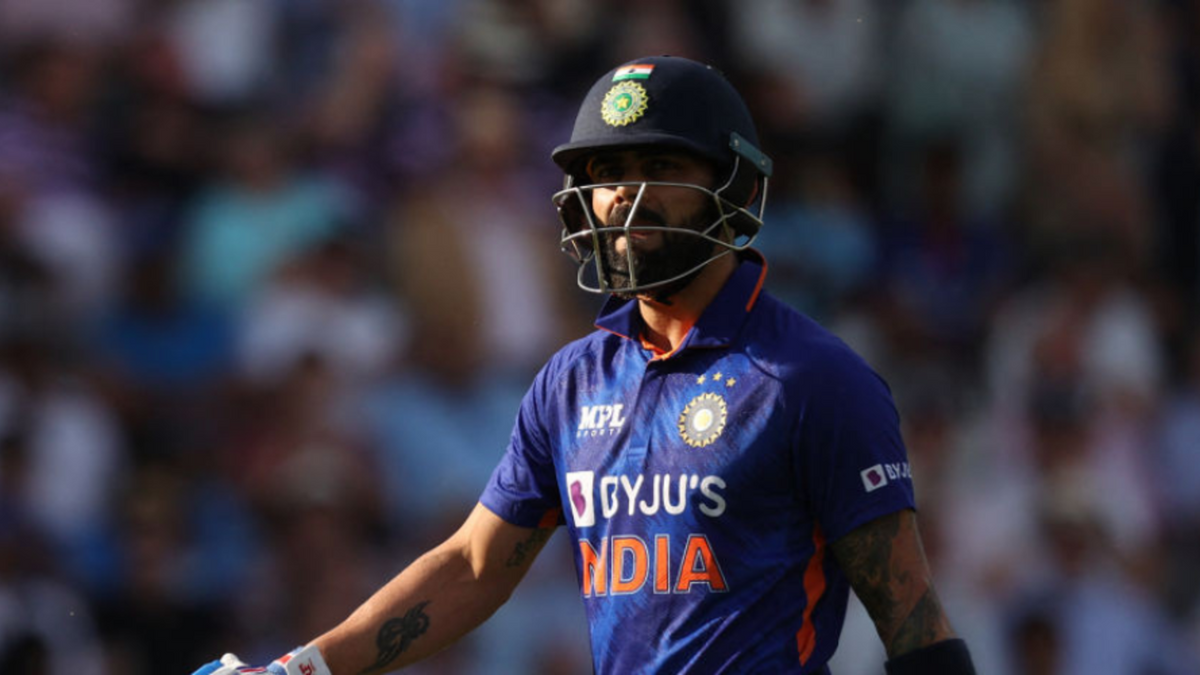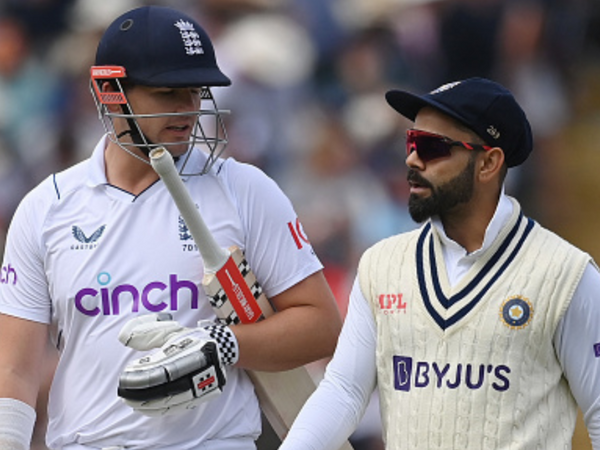
Virat Kohli has been rested from India’s five-match T20I series against West Indies. But even if he is available, he might not necessarily walk into India’s first-choice XI, writes Shashwat Kumar.
Cast your mind back to the 2016 T20 World Cup. It felt like everything for India depended on how Virat Kohli would fare. He ended the competition as the leading run-getter and also bagged the Player of the Tournament award. This outing was preceded by another stellar run during the 2014 T20 World Cup – an event where India fell short at the final hurdle to Sri Lanka and where Kohli also picked up the Player of the Tournament honour.
For a time, Kohli’s stocks continued to rise even further. Few were scoring runs in the shortest format as briskly as the former India captain, and even fewer were scoring them as consistently. By the end of 2019, Kohli had scored 2,633 T20I runs, and had done so at an average of 52.66 and a strike rate of 138.07.
Things haven’t been as rosy in recent times, though. The fact that we are arguing whether he should be a part of India’s T20I side – a team that was once defined by his consistent run-scoring – should be enough to tell you how steep the fall from grace has been. Prior to the T20I series against England, there had been murmurs that Kohli’s spot was in danger. His recent record for India isn’t bad. Since the start of 2021, he has scored 380 runs at an average of 47.5. The strike rate, however, has come down to a more than healthy 131.91.
For most teams, this wouldn’t be anything to comment on. But for India – a team whose timid displays at ICC events have come in for criticism – it becomes a sticking point. Had Kohli not had many competitors breathing down his neck, it would be a simple decision to back their former captain and hope that he’d rediscover his mojo sometime in the near future. With the embarrassment of batting riches in India, however, there is no need for them to stick with a misfiring player, even if that player is Kohli.
The Kohli question is compounded by the feeling that, recently, India have attempted to adopt a new style of play in T20 cricket, one that makes best use of their outrageous batting talents and the fact that now, some of their bowlers are capable with bat in hand. They are attacking hard from ball one, something which has never really been Kohli’s style. It’s to his credit that he has tried to adapt, hitting a four and a pristine, trademark six in a six-ball 11 in the final T20I against England. But if India want all of their top-order to tee off in the powerplay, Kohli is unlikely to fit that bill.
Still, it can be argued that if the rest are attacking from the get-go, that only makes Kohli’s role more important. He can be the steady hand, the anchor who the rest can bat around. At his best, Kohli was one of the best of that type of player there has been. But it’s been a while since he has been at his best.
An issue that has crept into Kohli’s game is his tendency not to increase his batting tempo during the middle overs. He has struggled against spin in particular, meaning that he has often chewed up deliveries and arrested whatever momentum has been generated during the powerplay. This goes against India’s attempt to embrace an ultra-attacking batting mantra, which includes being aggressive in the middle overs and against spin.
Being proactive in the middle overs has a two-fold impact on any T20 innings. If the spinners are put under pressure, captains are forced to go back to their pace bowlers, opening up run-scoring opportunities towards the end. Most teams also use their spinners as wicket-taking options. By fighting fire with fire, they will be forced to move out of their comfort zone, making batting easier for those who follow.
Since the start of 2020, Kohli has struck at 114.07 in the middle overs in T20 cricket. His strike rate against spin (105.22) is even lower. He doesn’t get out to spin regularly, but given he isn’t scoring quickly either, this is actually worse for India. Now he is eating up deliveries, ridding those behind him the chance to leave a substantial imprint on the game.
This is a problem that has been specific to Kohli. The other candidates to bat at No.3, the likes of Deepak Hooda, Ishan Kishan, KL Rahul and Suryakumar Yadav have considerably better numbers. In the same time period, Hooda strikes at 143.99 in the middle overs. Against spin, that falls a little (138.16), although it is still much better than Kohli’s corresponding tally. Suryakumar is the best of the lot, striking at 147.1 in the middle overs and 145.02 against spin. Kishan, too, rattles along at 136.73 in the middle overs and strikes at 130 against spin.
The only batter close to Kohli, in terms of strike-rate against spin, is Rahul. He only strikes at 117.68. The opener, however, averages 52.28 against spin. Kohli, meanwhile, averages 44.28. If you want to bet on somebody navigating their way through on a spinning track, Rahul trumps the former India skipper.
Kohli, as many are right to point out, has not turned into a bad player overnight. If he gets back into the groove, he still has the ability to single-handedly take down top-quality oppositions. The quandary here, though, is whether he can, with the skill-set he has displayed in the past couple of years, be suited to India’s bolder T20I approach.
The former India captain rarely moves away from his batting template. He usually takes his time, builds his innings before accelerating towards the end of his innings. This modus operandi centres around consistency and the belief that if he is still at the crease, he can affect the outcome of games. But if he is trying to buy into India’s new philosophy, which was the case against England, he will not be as consistent. In four T20Is under Rohit Sharma, he averages a tick over 20, striking at just 128.57. Without that consistency, he suddenly is without his USP.
It is, in many ways, a problem that Manchester United are having with Cristiano Ronaldo. The Portuguese superstar is one of the best strikers on the planet and can single-handedly win them games of football. However, he doesn’t contribute to other facets of Manchester United’s game as much. If he is asked to be more active in different phases of play, he might lose what has been his USP – goal-scoring.
That’s a part of the question India have to answer, too. Kohli remains a match-winner and he could make many of us who questioned his T20I status look very foolish very swiftly. The numbers, though, hint that he might not be as cut out for this approach as much as some of the others.
Maybe then, it is time for everyone to accept that Kohli no longer earns a place in India’s T20I team. It’s not a blot on what he has achieved historically, or a blemish on the superb T20I player he has been for India. It’s just that, at this juncture, India’s T20I side wants to be defined by a style of play Kohli doesn’t currently fit in with. And with Rohit Sharma, Rahul, Suryakumar, Pant and Hardik seemingly lock-ins for the XI and a vast queue of younger talents banging down the door from the outside, Kohli should no longer be guaranteed his customary spot in the XI.








